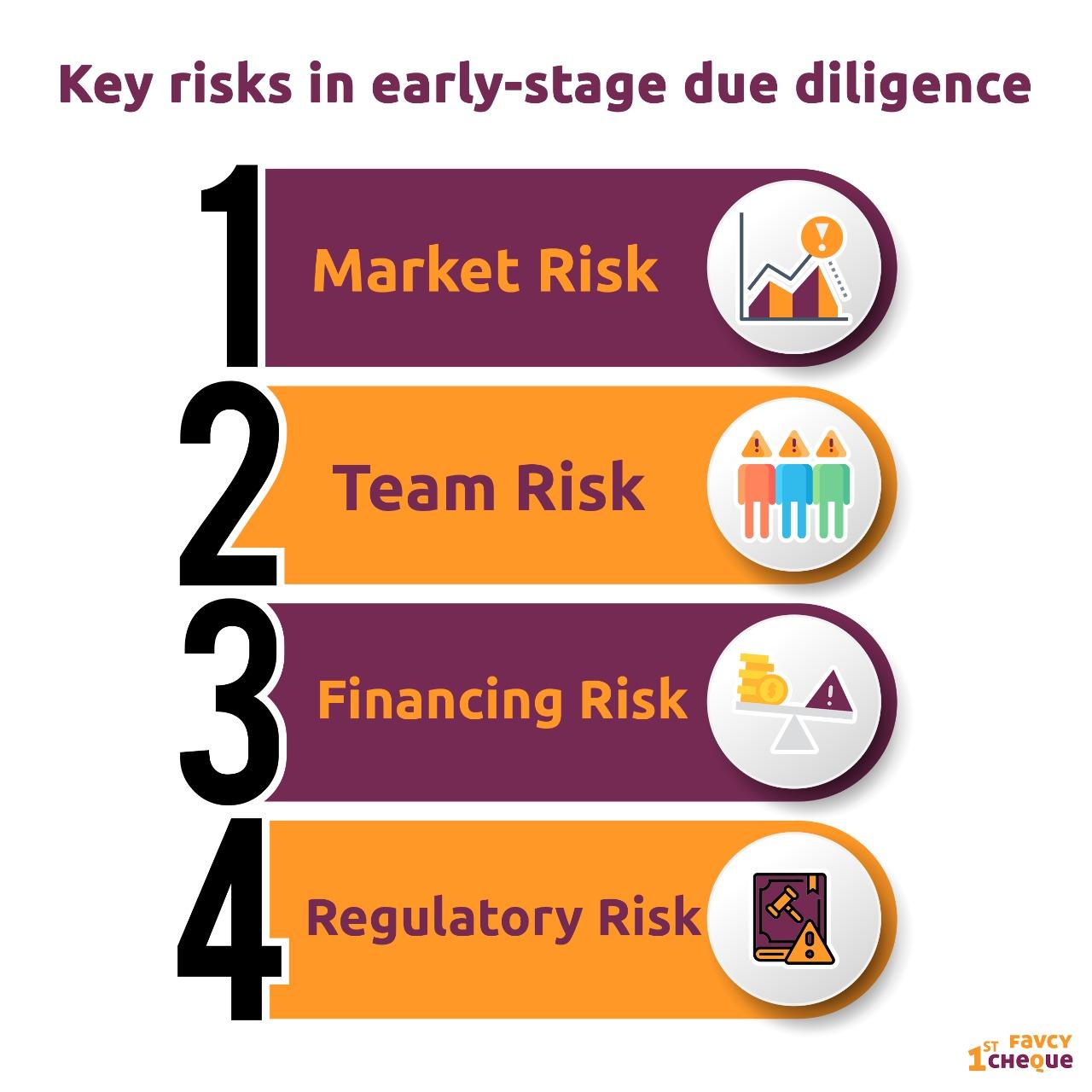
Treading on Thin Ice - Key Risks in Early Stage Due Diligence

-
Angel investing is a game that often involves taking risks. But the due diligence process warns you to beware!
-
So the question arises - to be or not to be risk-averse?
-
How does one determine potential risks during the due diligence? What risks are a no-go and which ones are easily manageable?
-
Read on!
Have you ever gone skiing?
The entire act of skiing depends on being diligently able to balance your body weight and, at the same time, guide your path with the help of ski poles. I am no pro at skiing, but like with any ice-related activity, skiing can often be deadly without proper training and supervision.
Now imagine that an early-stage startup is a skiing amateur, and the startup ecosystem is a wide expanse of undiscovered ice. If the company isn’t prepared properly for the ice and taught the nuances of walking on it - it will end up in an accident. And you don’t want to be rooting for a player bound to lose, right?
This is why due diligence plays such an important role. And therefore, due diligence is meant to select the potential winners, identify the key risks associated with the investment and develop a risk mitigation plan with company management as part of a potential investment.
But what are the key risks in early-stage due diligence?
Good decisions begin with good information. During due diligence, you will need to gather basic data to assess the adequacy of planning for each of the following areas:

- Market Risk
- Team Risk
- Financing Risk
- Regulatory Risk

Market Risk - Is it big enough to catch attention?
Market Opportunity is an essential statistic for determining an early-stage company's long-term potential. We make investments in firms with market capitalizations of at least $100 million. A market of such magnitude may sustain a firm worth $25 million or more. Because many early-stage firms are entering new sectors, calculating the total market size is difficult.
When evaluating market opportunities, it is critical to determine how much buyers are willing to pay for the product, since this will be a primary driver of top-line revenue. Don't depend exclusively on information the founder discloses. Rather, you and your team should attempt to build your own evaluation of the market potential.
Lastly, there is the famous ‘Product-Market Fit!’ From a diligence perspective, determining product/market fit is tricky because there are very few data points. So it’s as if you are trying to read tea leaves. It can take months of experimentation to find a product/market fit, and so it is often necessary to raise money before the company has found it. You may still invest prior to product/market fit, but you need to recognize what you are doing, size the round modestly, and establish a cost-effective path to find it.

Team Risk - Leaders are made, not born
There are four skills that you can look for in a startup team when performing due diligence. Given the small size of an early-stage company, sometimes these skills are part of the CEO’s repertoire, but it helps to see them also incorporated into the skill set of the other founding members.
- First, look for selling skills. Whether talking to prospects, investors, or future employees, the management team has to be able to sell. If you ain’t sellin’, nobody’s buyin’!
- Second, look for technical skills. If it is a tech company, one expects them to have a great product that will build some competitive barriers to entry. If technical skills are lacking and need to be outsourced, that can be a real issue for a tech-centric company.
- Third, look for deep market awareness. This market awareness is critical for developing the company’s strategy.
- Fourth, look for product management skills. This is closely related to market awareness because it requires the ability to listen to customers and understand the competitive environment. It also requires the ability to translate market needs into a plan that engineering can actually deliver in a timely fashion given limited company resources.
Lastly, you must also take into account how you will fit in, as a future board member (if you choose to stick around) with the entire team.

Financing Risk - More dollar bills mean more bills and vice versa
Many start-up founders assume growth is the answer to all their financing problems, but anyone with little financing experience knows that growth does not produce cash, it consumes cash. The assumptions in a solid financial plan should take these realities into account.
You must make sure that the financial plan addresses all or most of these questions -
- Is the company’s long-term funding plan connected to specific milestones such as the first prototype, beta test completion, FSSAI approval, pilot production, etc.?
- When will the company reach cash flow breakeven/positive and how much funding will be required to reach this point (remembering that driving growth consumes cash)?
- Have unit sales volumes been tied to rational sales cycles and seasonality?
- Are market penetration rates consistent with the market sizing and competitive conditions shown in the Business Plan?
- Do Average Sales Prices (ASPs) link to market comparables and anticipate future competitive pricing pressures?

Regulatory Risk - Better safe than sorry
It may be hard to imagine, but it is not uncommon for an early-stage firm to encounter a slew of legal challenges before even beginning to sell anything. The good news is that at this point, most legal difficulties are limited to a few locations. With a little digging, you can find out if the firm needs any legal work done before you sign the cheque and close the deal.
For most early-stage companies there are four main areas where you want to concentrate your legal due diligence:
- Intellectual Property - Verifying clear ownership or licenses of necessary IP assets is critical. You must ensure that the company has secured appropriate assignment of invention and non-disclosure agreements with all past and present individuals who worked on the intellectual property, whether as founders, employees, consultants or otherwise.
- Corporate Capitalization Structure - Basically, who owns what. A comprehensive cap table that tracks the equity ownership of all the company’s shareholders and security holders and the value assigned to this equity.
- Third-Party Contracts - The company’s deals with other companies.
- Employee Agreements - Ask about any ongoing employment issues. You need to understand a company’s obligations to its employees, from promises of deferred salary and bonus to severance agreements to purported grants of equity. A good company takes care of its employees.
The best way to avoid accidents on ice is to learn how to avoid treading on thin ice altogether
These are the key risks you must pay attention to during early-stage due diligence.
However, risk is impossible to avoid in business - it is an inherent part, and necessary ingredient, in all successful undertakings. You shouldn’t be afraid of risk and allow it to turn you away from great investment opportunities. Instead, you should focus on understanding what critical risks are involved with an early-stage company and the degree to which they have been mitigated with resources, smart planning, and preparation. Understanding the adequacy of these plans is an important skill to develop for all investors.
What you need to remember the most is that risk is not bad; a lack of strategy for dealing with risk is.